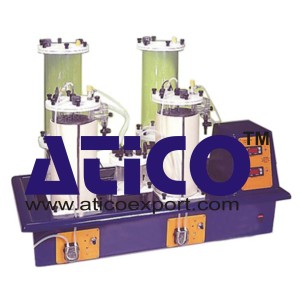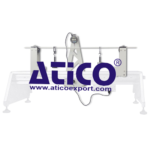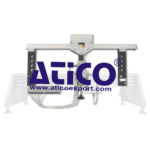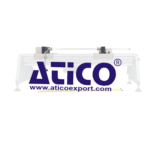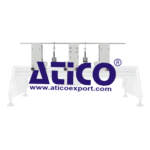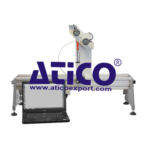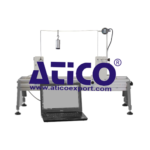This product is used for sewage treatment and bio-gas generation. It is the process in which animal or food waste used for the production of biogas and biofertilizer. One popular type of this process is Anaerobic contact process. In this type. By using the recycling process, a set of reactors is created in a series. This reactor allows the process to flow up from the bottom and after that it separates the waste into 3 zones. First zone is Biogas zone. In this zone the entire gas is collected. Anaerobic means ‘in the absence of oxygen’.
There are various types of Anaerobic Digester:
- Anaerobic activated sludge process
- Anaerobic clarigester
- Anaerobic contact process
- Anaerobic expanded-bed reactor
- Anaerobic filter
- Anaerobic fluidised bed
- Anaerobic lagoon
- Anaerobic MBRs
- Anaerobic migrating blanket reactor
- Batch system anaerobic digester
- Continuous stirred-tank reactor (CSTR)
- Expanded granular sludge bed digestion (EGSB)
- Hybrid reactor
- Imhoff tank
- Internal circulation reactor (IC)
- One-stage anaerobic digester
- Plug-flow anaerobic digester
- Submerged media anaerobic reactor
- Sintex Digester
- Two-stage anaerobic digester
- Upflow anaerobic sludge blanket digestion (UASB)
- Upflow and down-flow anaerobic attached growth
Types of Anaerobic Digester:
- Anaerobic activated sludge process
- Anaerobic clarigester
- Anaerobic contact process
- Anaerobic expanded-bed reactor
- Anaerobic filter
- Anaerobic fluidised bed
- Anaerobic lagoon
- Anaerobic MBRs
- Anaerobic migrating blanket reactor
- Batch system anaerobic digester
- Continuous stirred-tank reactor (CSTR)
- Expanded granular sludge bed digestion (EGSB)
- Hybrid reactor
- Imhoff tank
- Internal circulation reactor (IC)
- One-stage anaerobic digester
- Plug-flow anaerobic digester
- Submerged media anaerobic reactor
- Sintex Digester
- Two-stage anaerobic digester
- Upflow anaerobic sludge blanket digestion (UASB)
- Upflow and down-flow anaerobic attached growth
Technical Specifications
Reactors: Two, indentical -nominal capacity: 5 litres packed volume: 4 litres 150mm dia x 250mm high Reactor 25mm diameter Bio-balls packing: Temperature for each reactor: control: 200W heating jacket with PID control from a temperature sensor positioned inside the reactor, set point within range ambient to 55°C, the jacket is thermostatically protected by a cut-out set at 85°C Feed pumps: Two, identical peristaltic pumps -variable speed using 10 turn potentiometer to 4rpm supplied with three tube diameters, 1.6, 3.2 and 4.0mm flow rates from 0.2 to 7 l/day Gas collection Two, identical -vessels: linear scale, 0-5 litre capacity
Process Studies
Broadly speaking the anaerobic process may be divided into two distinct stages, (1) the hydrolysis of large molecular species into acetic acid and (2) the conversion of the acetic acid into methane and carbon dioxide.
This two stage process can be demonstrated by operating the two reactors in series, one to produce volatile acids from the initial substrate – acidogenesis and the second to convert the volatile acids into methane and carbon dioxide – methanogenesis. In addition the following basic differencies of the two stages of the process can be demonstrated:
- the low level of methanogenic activity during acidogenesis compared to methanogenesis
- the low level of COD removal exhibited by the acidogenic stage compared with the methanogenic stage.
Typical test results are shown below:
Ordering Specification
- A bench top Anaerobic digestic for waste water treatment studies
- Equipped with two 5 litre packed bed, upward flow reactors
- Each reactor has gas sampling & collection facilities
- Reactors may be operated in series or parrallel flow arrangement, usingvariable speed peristaltic pumps
- Feed flow rate to each reactor can be accurately & independently controlled to any temperature between ambient and 55°C, using 200W heating jackets
- Thermostatic cut-out set to 85°C
- An instruction manual describing test and practical work capabilities, including details of a proven test substrate formulation is included
Services Required
- Electrical supply:
- 220-240V/1ph/50Hz
- 120V/1ph/60Hz
